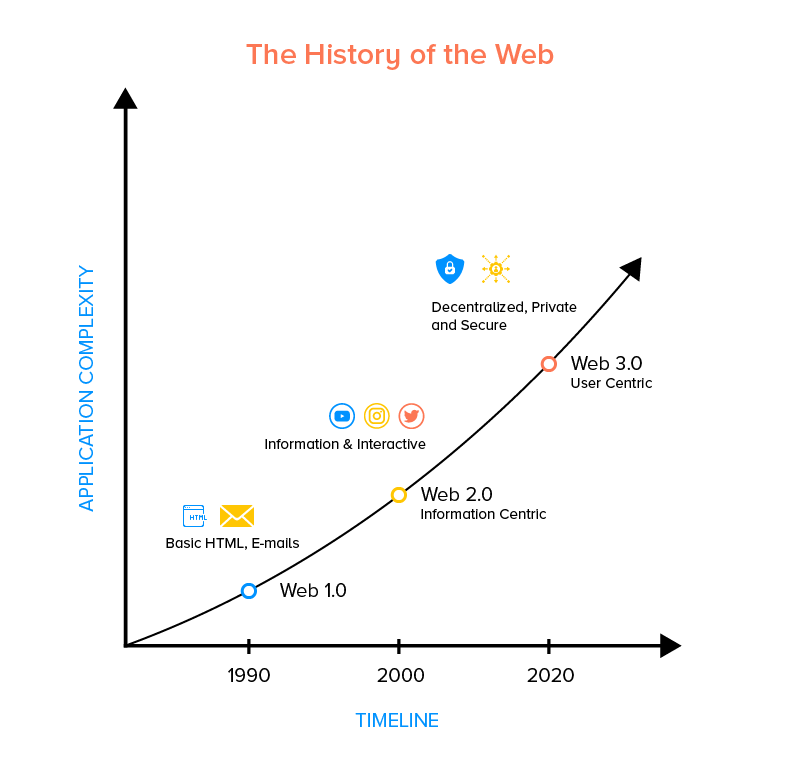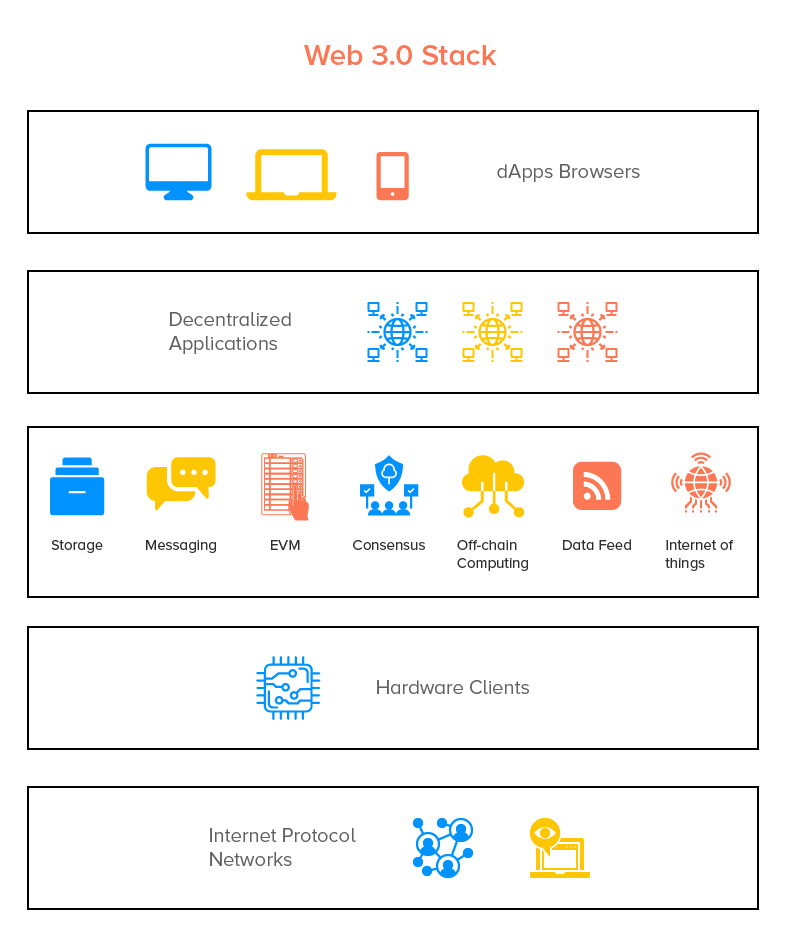
How Web 3.0 Blockchain Will Transform Business Operations
The web has evolved dramatically since its inception in the 1990s by Tim Berners-Lee. As we transition from Web 2.0 to Web 3.0, a fundamental shift is occurring in how we interact with and control our digital world.
Web Evolution Timeline:
Web 1.0: The "readable" phase with static content and minimal user interaction.
Web 2.0: The "writable" era introducing social media, user-generated content, and interactive experiences.
Web 3.0: The emerging "executable" phase powered by blockchain technology, emphasizing user privacy and data ownership.

Web history timeline diagram
Key Components of Web 3.0:
- Blockchain technology for decentralization
- Artificial Intelligence for intelligent interactions
- IoT integration for ubiquitous connectivity
- AR/VR for immersive experiences
- Semantic web capabilities

Web 3.0 Blockchain Technology Stack
Core Benefits:
- Enhanced Privacy and Security
- User Data Ownership
- Decentralized Control
- Interoperability
- Permissionless Access
Industry Applications:
- Social Media: Decentralized platforms with user data control
- Financial Services: Transparent, secure transactions
- Data Storage: Distributed, encrypted storage solutions
- Content Streaming: Fair compensation for creators
- Insurance: Automated, transparent claims processing
- Browsing: Privacy-focused web experience

Web 3.0 blockchain technology key benefits
The transition to Web 3.0 will revolutionize business operations, emphasizing transparency and user empowerment. While the shift won't happen overnight, organizations should begin preparing for this decentralized future by understanding and implementing blockchain technologies.
